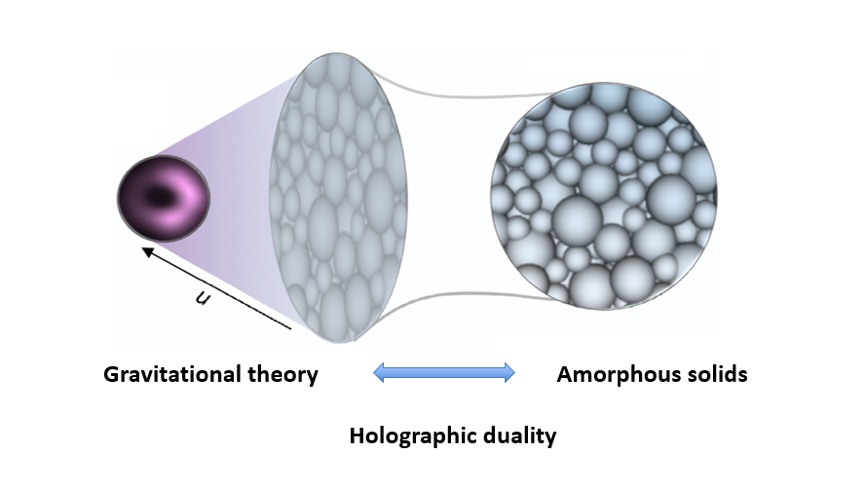
As the Avatamsaka Sutra says, "In a speck of dust, one learns to see the world." Researchers from the Institute of Theoretical Physics of the Chinese Academy of Sciences (ITP-CAS) and Shanghai Jiao Tong University (SJTU) have found that granular matter (such as sands) and some black hole models display similar nonlinear effects. The bridge between the two is the gravitational holographic duality.
The gravitational holographic duality (also known as gauge/gravity duality or AdS/CFT correspondence), which represents one of the most profound theoretical advances in modern physics, was proposed by physicist Juan Maldacena in 1997. This duality allows one to map unsolved physical problems to tractable higher-dimensional gravitational counterparts and vice versa. The mapping between different dimensions resembles the optical holographic projection technique, hence the name. Although the holographic duality originated from string theory and was part of the quest for a consistent theory of quantum gravity, it has also been widely applied to quantum chromodynamics, condensed matter physics, and quantum information. The approach has provided many significant results. As an example, the universal bound on the ratio of the viscosity coefficient to entropy density derived from the holographic method has been confirmed by several experiments.
In this work, the idea of holographic duality is extended to a concrete type of athermal, disordered solids - granular materials. Since granules tend to have a macroscopic size, thermal fluctuations and quantum effects can be ignored. In addition, the traditional elasticity theory of ordered crystals is no longer applicable, due to the disordered nature of granular materials (i.e., there is no periodic lattice structure for the spatial distribution of grains). Understanding the physical properties of granular matter, such as the complex mechanical responses, remains a theoretical challenge.
Granular materials can resist deformations to a certain extent and maintain their structural integrity. Nevertheless, when the deformation exceeds a certain threshold, the material breaks, a phenomenon known as yielding. In some cases, shearing can lead to the hardening of the granular system (i.e., an increase in shear modulus), which appears as a nonlinear response to the external deformation. This study predicts intrinsic relationships among the nonlinear elasticity, yielding and entropy of granular matter, based on the holographic duality principle and effective field theory techniques. Computer simulations of granular models verify the theoretical predictions. This research not only expands the application scope of the holographic duality, but also reveals the potential relationship between black hole physics and amorphous materials, providing a new avenue for the study and understanding of complex systems.
The results have been recently published in Science Advances. The co-first authors are Postdoctoral fellow Deng Pan and Ph.D. student Teng Ji; the co-corresponding authors are Professor Yuliang Jin, Associate Professor Li Li of ITP-CAS, and Associate Professor Matteo Baggioli of SJTU. The authors acknowledge funding support from the National Natural Science Foundation of China, the Chinese Academy of Sciences and Shanghai Science and Technology Major Projects. The simulations were performed on the High-Performance Computing Cluster of ITP-CAS.





